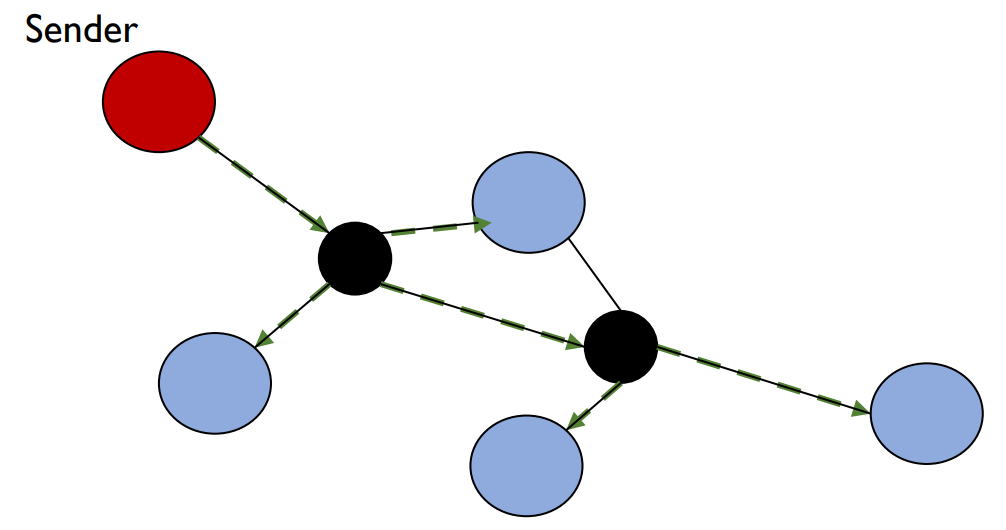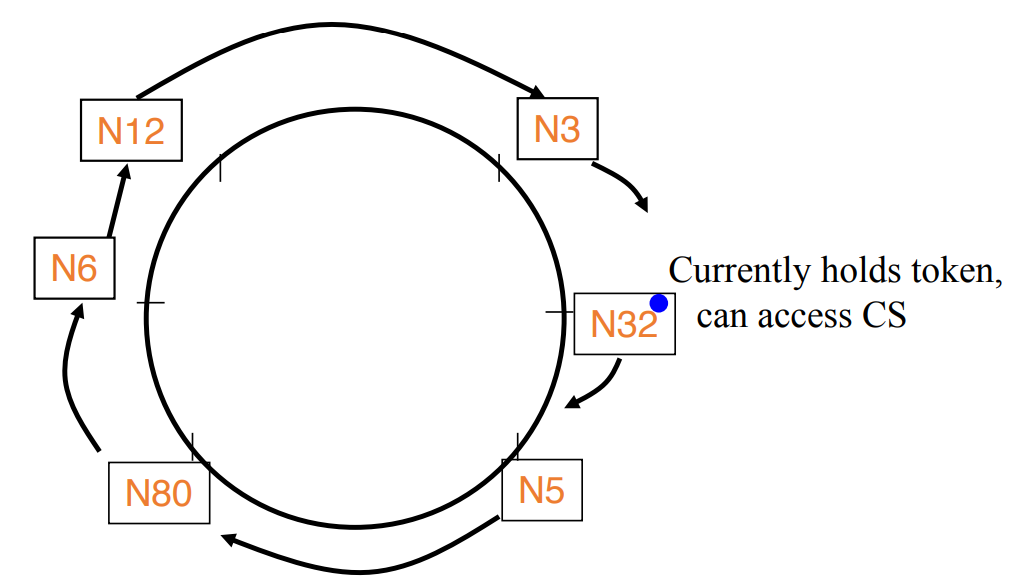Distributed System (8)
More efficient B-multicasts
B-multicast

in physical network view: Redundant packets

Tree-based multicast
construct a minimum spanning tree and unicast along that.

then,

construct a tree that includes network routers.

IP multicast
Third approach: Gossip
- Transmit to b random targets.
- Other nodes do the same when they receive a message.
Properties
- No “tree-construction” overhead.
- More efficient than unicasting to all receivers
- no hard guarantees.

Mutual Exclusion
Classical algorithms for mutual exclusion in distributed systems:
- Central server algorithm
- Ring-based algorithm
- Ricart-Agrawala Algorithm
- Maekawa Algorithm
prerequisites
- Safety (essential):
- At most one process executes in CS (Critical Section) at any time.
- Liveness (essential):
- Every request for a CS is granted eventually.
- Ordering (desirable):
- Requests are granted in the order they were made.
Central Server Algorithm
- Elect a central server (or leader)
- Leader keeps
- A queue of waiting requests from processes who wish to access the CS
- A special token which allows its holder to access CS
- Actions of any process in group:
- enter()
- Send a request to leader
- Wait for token from leader
- exit()
- Send back token to leader
- enter()
Leader:
- On receiving a request from process Pi
- if (leader has token)
- Send token to Pi
- else
- Add Pi to queue
- if (leader has token)
- On receiving a token from process Pi
- if (queue is not empty)
- Dequeue head of queue (say Pj), send that process the token
- else
- Retain token
- if (queue is not empty)
Ring-based algorithm
the token travel around the ring.

- enter()
- Wait until you get token
- exit() // already have token
- Pass on token to ring successor
Distributed System (8)
https://yzzzf.xyz/2024/02/23/distributed-system-8/